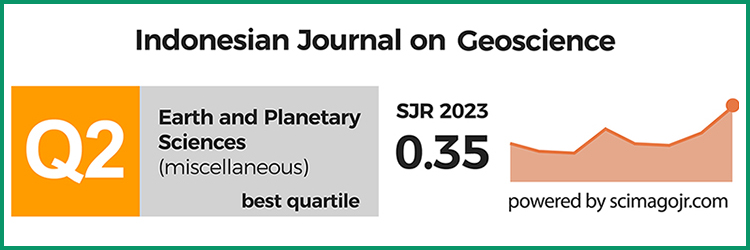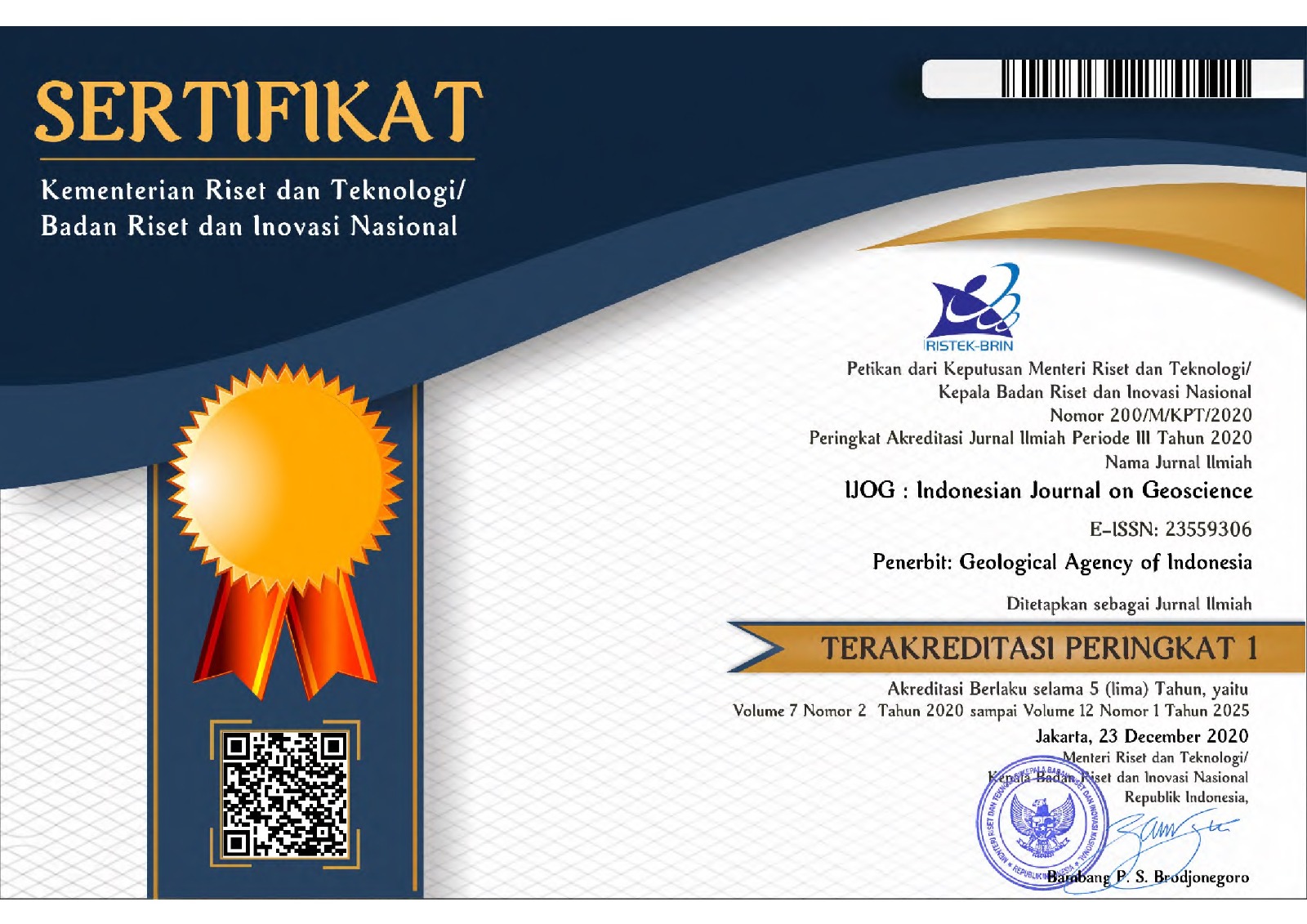Organic Geochemistry and Rock-Eval Pyrolysis of Eocene fine Sediments, East Ketungau Basin, West Kalimantan
DOI:
https://doi.org/10.17014/ijog.6.2.95-104Keywords:
East Ketungau Basin, Eocene, Rock-Eval pyrolysis, biomarkerAbstract
Indonesia contains many Paleogene and Neogene basins which some of them have been proven to be a very prolific producer of oil and gas. A study on the result of Rock-Eval pyrolysis and biomarker undertaken on the Eocene Mandai Group was able to assess hydrocarbon potential of the Paleogene fine sediments in the frontier basin, especially West Kalimantan area. East Ketungau Basin is located in the western Kalimantan, bounded with Melawi Basin by the Semitau High in the south and West Ketungau Basin in the west. The Mandai Group was deposited in the East Ketungau Basin during Eocene, consisting of sandstone and mudstone facies. Mudstone facies comprises shale, claystone, and coal. Seven samples of Eocene fine sediments collected from East Ketungau Basin were analyzed by Rock-Eval pyrolisis and three samples for biomarker to evaluate their hydrocarbon potential. The Rock-Eval pyrolisis result of Mandai Group shows that TOC value of this facies ranges from 0.34 % to 5.16 %, Potential Yield (PY) between 0.06 and 4.78 mg HC/g rock, and Hydrogen Index (HI) from 12 to 89. Based on that result, the fine sediments of Mandai Group are included into a gas prone source rock potential with poor to fair categories. Moreover Tmax values vary from 426o C to 451o C. The Eocene fine sediments of Mandai Group fall under kerogen type III. Based on Tmax and biomarker analyses, the maturity of the sediments is situated within immature to mature level. The fine sediments of Mandai Group were deposited in a terrestrial to marine environment under anoxic to sub-oxic condition.
References
De Coster, G.L., 1974. The Geology of the Central and South Sumatra Basins. Proceedings of Indonesian Petroleum Assosiation 3th Annual Convention, p. 77-110.
Peters, E. and Moldowan, J., 1993. The biomarker guide: Interpreting molecular fossils in petroleum and ancient sediments, Englewood Cliffs, Prentice Hall, 363pp.
Pieters, P.E., Surono., and Noya., Y., 1993. Peta Geologi Lembar Putussibau, Kalimantan, Skala 1: 250.000. Pusat Penelitian dan Pengembangan Geologi, Bandung.
Pieters, P.E., Trail, D.S., and Supriatna, S., 1987. Correlation of Early Tertiary rocks across Kalimantan. Proceedings, 16th Annual Convention of Indonesian Petroleum Association, p. 291-306.
Sikumbang, N., 1990. The geology and tectonics of the Meratus Mountains, South Kalimantan, Indonesia. Journal of the Indonesian Association of Geologists, 13 (2), p. 1-31.
Waples, D.W., 1985. Geochemistry in Petroleum Exploration. International Human Resources Development Corporation, Boston, 232 pp.
Waples, D.W. and Machihara, T., 1991. Biomarkers for geologists - a practical guide to the application of steranes and triterpanes in petroleum geology, American Association of Petroleum Geologists Methods in Exploration Series 9. The American Association of Petroleum Geologists, Tulsa, Oklahoma, USA. DOI:10.1017/S0016756800008529
William, P.R., Supriatna, S., and Harahap, B.H., 1986. Cretaceous melange in West Kalimantan and its implication. Bulletin of the Geological Society of Malaysia, 19, p. 69-78.



















